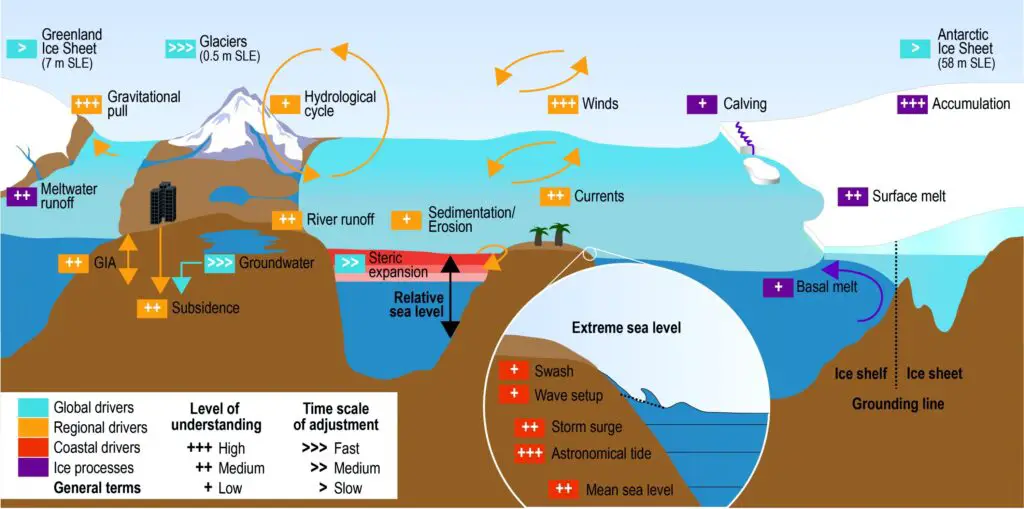Welcome to an insightful article all about preparing for sea-level rise and the strategies you can implement to ensure your coastal survival. As our planet’s climate changes, it is crucial to be proactive in protecting yourself and your community from the potential impacts of rising sea levels. From building sea walls to implementing natural ecosystem restoration projects, there are a variety of approaches you can take to safeguard your coastal environment. Join us as we explore the best practices for prepping for sea-level rise and securing your future on the coast. Have you ever wondered how rising sea levels will impact coastal communities? Learn about proactive strategies you can implement to prepare for the inevitable changes that come with sea-level rise. Let’s explore coastal survival strategies together.
Understanding Sea-Level Rise
Sea-level rise is the gradual increase in the level of the world’s oceans. This phenomenon is primarily caused by the melting of ice caps and glaciers due to global warming. As the Earth’s temperature rises, the thermal expansion of water also contributes to sea-level rise. As a result, coastal communities are at risk of experiencing more frequent and severe flooding events.
You might be wondering how sea-level rise will affect your coastal community. By understanding the science behind this phenomenon, you can better prepare for the changes that are bound to occur. Let’s delve into the potential impacts of sea-level rise on your region.
The Impact on Coastal Communities
Sea-level rise poses a significant threat to coastal communities around the world. As sea levels continue to rise, these regions will experience more frequent and intense flooding events, leading to erosion of coastal shorelines, loss of habitat for marine and terrestrial species, and disruption of coastal infrastructure.
Understanding how sea-level rise will impact your community is crucial for developing effective adaptation strategies. By being aware of the potential risks, you can take proactive steps to protect your coastal assets and resources. Let’s explore some coastal survival strategies that you can implement to prepare for sea-level rise.

Coastal Survival Strategies
As sea levels rise, coastal communities must adapt to the changing environment to ensure their survival. By implementing proactive strategies, you can minimize the impact of sea-level rise on your region. Let’s discuss some practical coastal survival strategies that you can incorporate into your community planning efforts.
Coastal Retreat
Coastal retreat involves moving existing infrastructure and populations away from at-risk coastal areas. This strategy allows for the natural migration of coastal ecosystems and habitats as sea levels rise. By relocating vulnerable assets to higher ground, communities can reduce their exposure to flooding and erosion risks.
If you live in a coastal community that is susceptible to sea-level rise, consider the possibility of coastal retreat as a long-term adaptation strategy. By gradually relocating critical infrastructure and residential areas to safer locations, you can protect your community from the devastating effects of rising sea levels.
Beach Nourishment
Beach nourishment is a process that involves adding sand or other sediments to eroding shorelines to restore their natural protective barriers. This technique helps to mitigate the impacts of sea-level rise by building up coastal beaches and dunes, which act as buffers against storm surges and erosion.
If your coastal community is experiencing beach erosion due to sea-level rise, consider implementing beach nourishment as a short-term adaptation measure. By replenishing the sand on your beaches regularly, you can enhance the resilience of your coastline and minimize the risks associated with rising sea levels.
Coastal Armoring
Coastal armoring involves constructing hard structures such as seawalls, revetments, and breakwaters to protect coastal areas from erosion and flooding. These engineered barriers help to stabilize coastal shorelines and provide a defense against storm surges and high tides.
If you live in a coastal community that is vulnerable to sea-level rise, consider the installation of coastal armoring structures as a means of protection. By building seawalls and other hard defenses along your coastline, you can safeguard your infrastructure and assets from the damaging effects of rising sea levels.
Living Shorelines
Living shorelines are nature-based solutions that use natural materials such as plants, sand, and oyster reefs to protect coastal areas from erosion and flooding. These sustainable alternatives to traditional coastal armoring techniques help to enhance habitat diversity and ecosystem resilience while providing effective shoreline protection.
If you are looking for environmentally friendly ways to adapt to sea-level rise, consider the implementation of living shorelines in your coastal community. By incorporating natural elements into your coastal defense strategies, you can reduce the impact of rising sea levels on your region while promoting ecological restoration and biodiversity conservation.
Managed Retreat
Managed retreat is a planned relocation strategy that involves the voluntary movement of assets and populations away from high-risk coastal areas. This adaptive measure allows communities to proactively address the challenges posed by sea-level rise and reduce their vulnerability to future climate impacts.
If you are concerned about the long-term viability of your coastal community in the face of rising sea levels, consider the adoption of managed retreat as a comprehensive adaptation strategy. By working collaboratively with stakeholders and planning authorities, you can facilitate the orderly relocation of at-risk assets and populations while minimizing the social and economic costs of sea-level rise.

Conclusion
As sea levels continue to rise, coastal communities must prepare for the inevitable changes that come with this phenomenon. By understanding the potential impacts of sea-level rise and implementing proactive adaptation strategies, you can protect your coastal assets and resources from the effects of rising sea levels.
Remember, the key to coastal survival is preparedness and resilience. By investing in sustainable coastal management practices and community planning efforts, you can ensure the long-term viability of your coastal community in the face of sea-level rise. Stay informed, stay proactive, and stay prepared for the challenges ahead.

